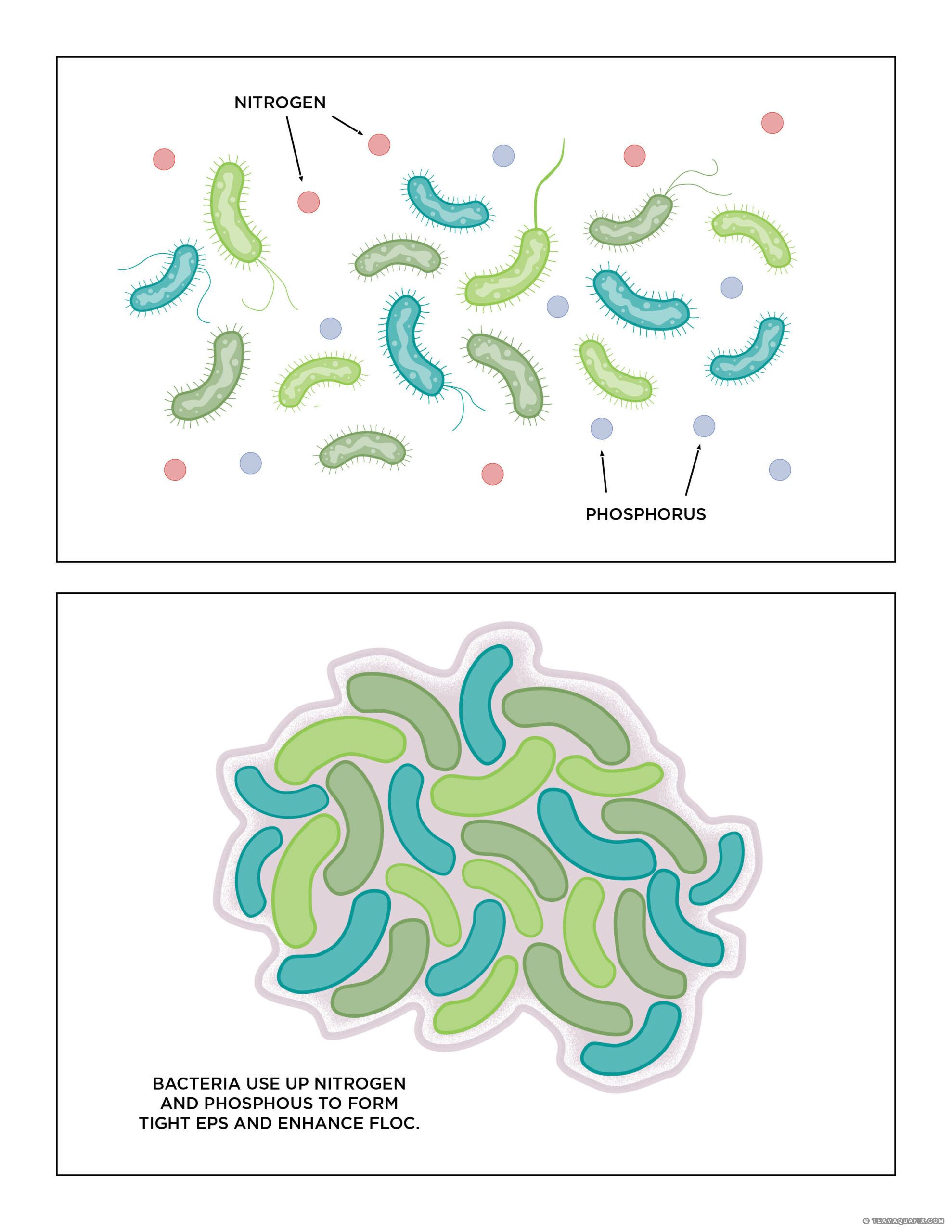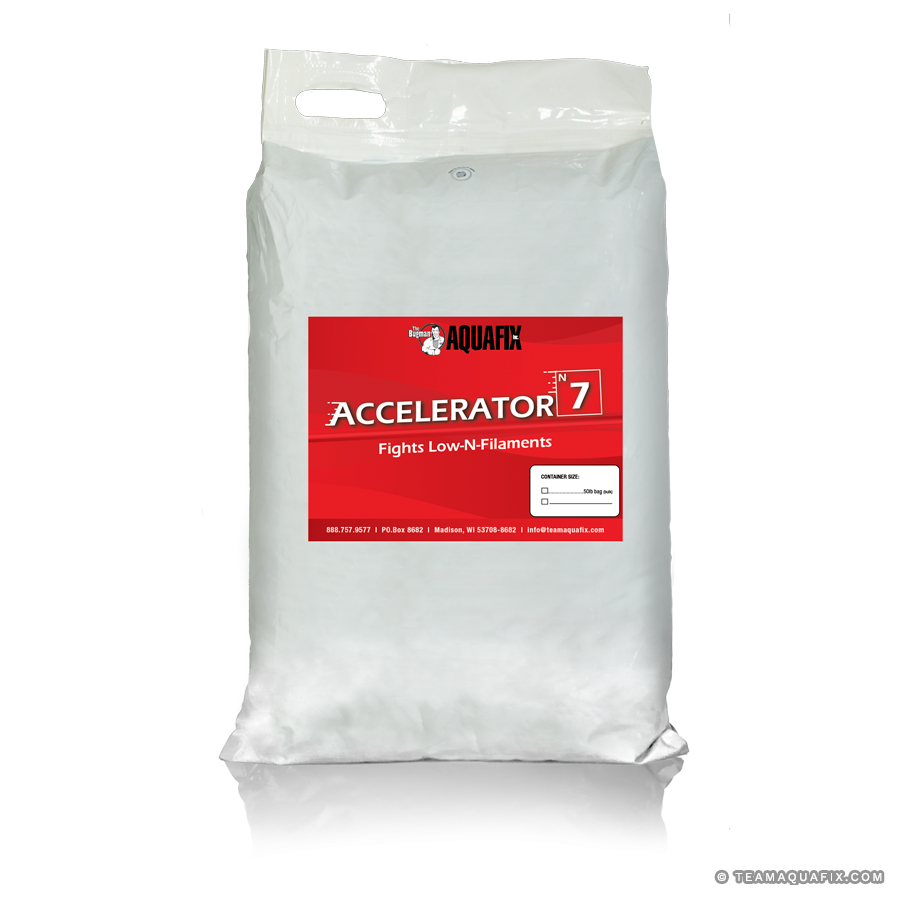Product Resources
PDF Downloads: Product info, SDS, and white papers
Accelerator 7
Nitrogen Supplement
- Bioavailable nitrogen supplement
- Reduce low nitrogen filaments
- Great for industries with uniform waste streams
50 lb. Container, Bulk
1-19 bags: $6.20/lb
20-39 bags: $5.10/lb
40 bags and up: $4.60/lb
(Quantity Discounts reflected in cart)
$310.00
Product Info
Accelerator 7 is an organic nitrogen source specifically formulated for rapid uptake by floc forming bacteria in wastewater systems with nitrogen deficiency. It also contains trace minerals and vitamins to promote floc formation.
Accelerator 7 is an excellent substitute for wastewater plants that use inorganic nitrogen sources like urea. Urea requires high dose rates and creates dissolved oxygen demand.
Poor floc caused by low nitrogen

As seen on the left, nitrogen is a key component for keeping the floc together and preventing a slimy MLSS and poor dewatering. Read more about the role of nitrogen in building floc. Accelerator 7 was developed to aid wastewater plants experiencing nitrogen deficiency.
Dose Rates
Companion Products
If low dissolved oxygen filaments are present pair with OxyFresh.
Applications and Benefits
- Controls nitrogen deficient filaments like Type 021N
- Decreases the production of diffused EPS
- Improves settling
- Improves sludge dewatering
- Safe and easy to use




Dana P. (WI) –
great
Holly B. (SC) –
Really great!